Aquaponic Chemistry | Managing Hydroponic Nutrients

|
Growing Lettuce Hydroponically
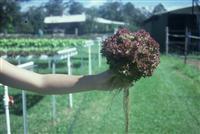 Lettuce are well suited to growing in hydroponics, virtually all round if you use the appropriate variety and manage it properly....(Excerpt from page) Click to read more Lettuce are well suited to growing in hydroponics, virtually all round if you use the appropriate variety and manage it properly....(Excerpt from page) Click to read more
|
Growing Strawberries in Hydroponics
 Strawberries are very well suited to hydroponic growing and the offer a quick return on capital outlays for the grower.They are grown widely as an NFT crop on a large scale; but are also well suited to a wide range of other hydroponic techniques, and are one of the most popular plants to be grown by hobbyists....(Excerpt from page) Click to read more Strawberries are very well suited to hydroponic growing and the offer a quick return on capital outlays for the grower.They are grown widely as an NFT crop on a large scale; but are also well suited to a wide range of other hydroponic techniques, and are one of the most popular plants to be grown by hobbyists....(Excerpt from page) Click to read more
|
Growing Tomatoes in Hydroponics
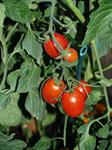 Tomatoes are one of the most popular plants to grow in hydroponics; both for hobbyists and for commercial farmers. Commercial growers most commonly use greenhouses. Home growers may use a small home greenhouse; or even grow a few tomatoes on a verandah, in a courtyard or in front of a window in a well lit part of the house. ...(Excerpt from page) Click to read more Tomatoes are one of the most popular plants to grow in hydroponics; both for hobbyists and for commercial farmers. Commercial growers most commonly use greenhouses. Home growers may use a small home greenhouse; or even grow a few tomatoes on a verandah, in a courtyard or in front of a window in a well lit part of the house. ...(Excerpt from page) Click to read more
|
| History of Hydroponics
There have been attempts for thousands of years to culture plants through artificial techniques which have similarities to modern hydroponics. These early attempts were not strictly hydroponics but certainly had many of the characteristics of hydroponics....(Excerpt from page) Click to read more
|
Hydroculture Container Plants
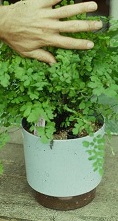 'Hydroculture' is a term which has largely been used to describe a style of hydroponics used and marketed by the German based company, Luwasa. This system relies on capillary feeding which involves the absorption of nutrients into the base of a medium followed by the upward movement by capillary action of those nutrients into the upper layers of the medium. ...(Excerpt from page) Click to read more 'Hydroculture' is a term which has largely been used to describe a style of hydroponics used and marketed by the German based company, Luwasa. This system relies on capillary feeding which involves the absorption of nutrients into the base of a medium followed by the upward movement by capillary action of those nutrients into the upper layers of the medium. ...(Excerpt from page) Click to read more
|
Hydroponic Facts
 When you take soil away from a plant you are removing natural mechanisms that the plant has come to rely upon. By removing what nature provides, you have a simple advantage - you can control the forces of nature, providing the positive forces, and eliminating the negative forces (eg. poor environmental conditions or exposure to disease). Doing this is not simple though. It requires a knowledge of plant and chemical science as well as horticultural technique. You can control a plant better, but only if you have the knowledge to control it properly....(Excerpt from page) Click to read more When you take soil away from a plant you are removing natural mechanisms that the plant has come to rely upon. By removing what nature provides, you have a simple advantage - you can control the forces of nature, providing the positive forces, and eliminating the negative forces (eg. poor environmental conditions or exposure to disease). Doing this is not simple though. It requires a knowledge of plant and chemical science as well as horticultural technique. You can control a plant better, but only if you have the knowledge to control it properly....(Excerpt from page) Click to read more
|
Nutrient Film Technique
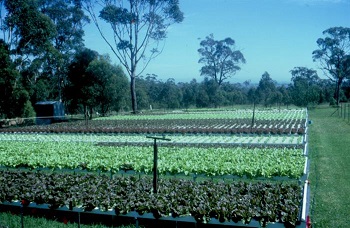 The main components of NFT systems are the growing channels, the benches or supports which hold the channels if they are to be raised above the ground (typically for lettuce, herbs and smaller plants), the main nutrient tank, the nutrient delivery systems and the return channels....(Excerpt from page) Click to read more The main components of NFT systems are the growing channels, the benches or supports which hold the channels if they are to be raised above the ground (typically for lettuce, herbs and smaller plants), the main nutrient tank, the nutrient delivery systems and the return channels....(Excerpt from page) Click to read more
|
Sand and Gravel for Hydroponics
 Hydroponic plants can be grown with their roots in any of a variety of different aggregates. They are likely to be suitable, as long as they are inert (free of nutrients or chemical properties that might affect the plants); and have the capacity to deliver air and water as required to the roots....(Excerpt from page) Click to read more Hydroponic plants can be grown with their roots in any of a variety of different aggregates. They are likely to be suitable, as long as they are inert (free of nutrients or chemical properties that might affect the plants); and have the capacity to deliver air and water as required to the roots....(Excerpt from page) Click to read more
|
Simple Manual Hydroponic Systems
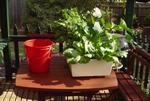 Hydroponics doesn't have to be large, complex or expensive for the beginner, or home hobbyist. Here are some ideas for simple systems that can be set up in any home garden, even on a small verandah, bacony, or in a sub room inside your house....(Excerpt from page) Click to read more Hydroponics doesn't have to be large, complex or expensive for the beginner, or home hobbyist. Here are some ideas for simple systems that can be set up in any home garden, even on a small verandah, bacony, or in a sub room inside your house....(Excerpt from page) Click to read more
|